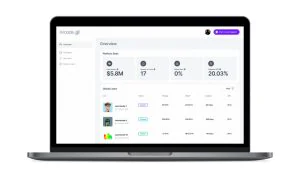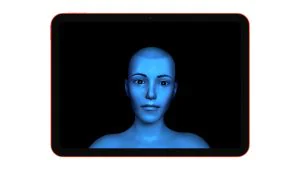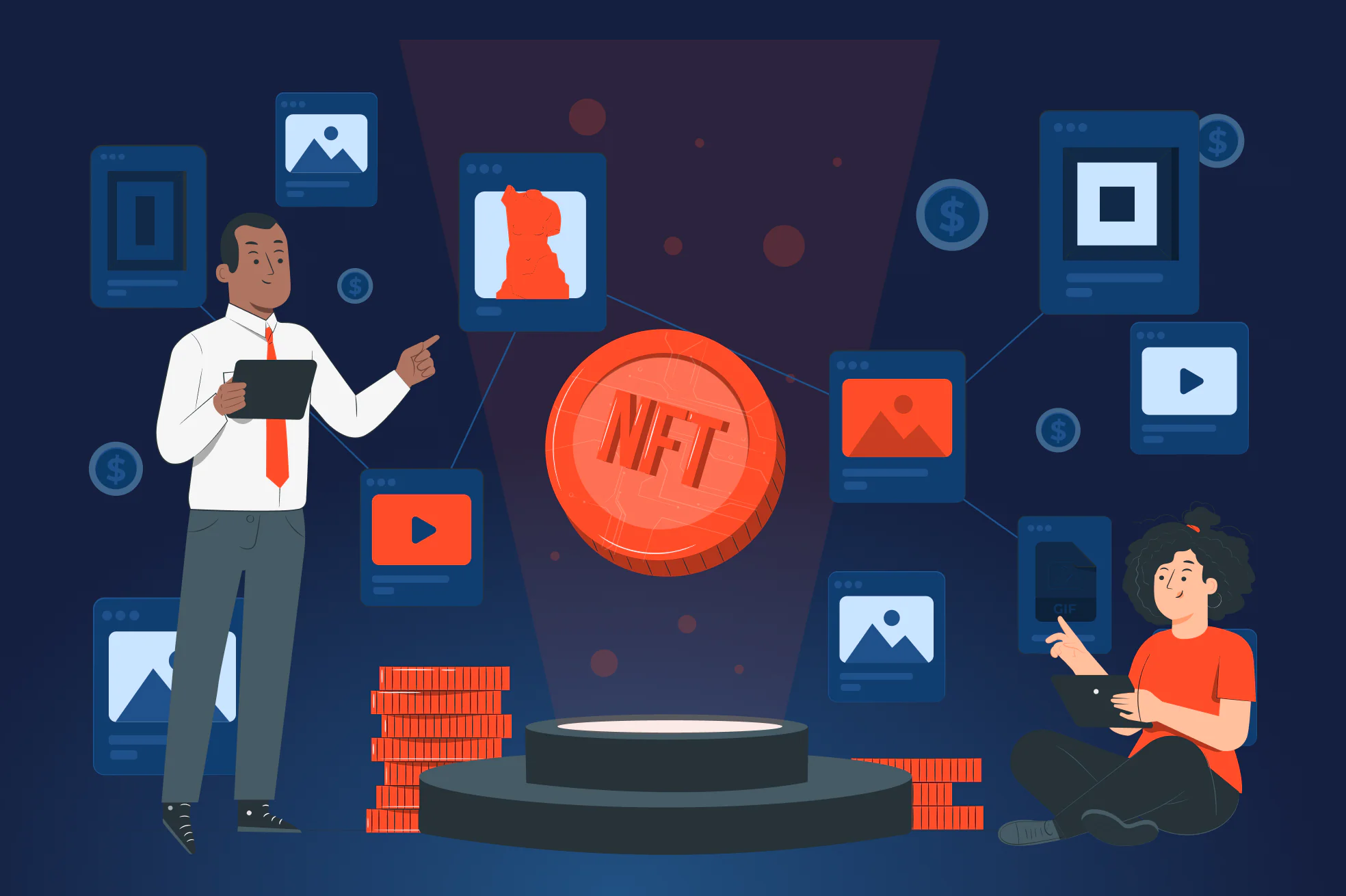Today, we can turn literally anything into a non-fungible token (NFT), even someone else’s tweets. Though you might say that owning a tweet is a questionable kind of investment, Sina Estavi, Bridge Oracle CEO, would surely disagree, as she bought the very first Tweet for an earth-shattering $2.9 million.
The first Tweet that was sold for $2.9 million
But even though anything can become an NFT, it’s hardly a good idea to go after everything under the sun if you have an ambition to become a market leader. That’s why in this article the JatApp team is going to talk about recent trends to help you make a smart business move when building an NFT platform.
But before we get started, let’s see what the NFT market looks like these days.
How is the NFT market doing today?
If you’re doubting whether building a marketplace is worth it, let us show you some compelling statistics. The NFT market is piping hot right now, with the revenue increasing at a compound annual growth rate (CAGR) of 22.82% by 2027. The global NFT transactions reached $1,574 million in 2021, and they’re expected to amass $8,068 million by 2027.
Global NFT transaction value
Moreover, the number of users is also predicted to grow over the next few years, from 50.33 million in 2023 to 64.45 million in 2027. What’s interesting is that in 2021 the market witnessed a sudden increase in the number of users after prolonged stagnation in 2018-2020.
The number of users in the NFT sector
So, what is the NFT segment up to?
If you feel convinced enough to act, you should think about the direction you’d like to pursue. The NFT market trends below will help you understand what niches will be the most beneficial for you.
NFT takes on the loan market
Today, many decentralized finance (DeFi) solutions allow the use of NFTs as collateral to get a loan. For example, Arcade, one of the most popular DeFi platforms, issues a smart contract that manages an escrow account, where the NFT collection is locked. Until the loan is fully paid, a user can’t access their NFTs.
Arcade, a popular DeFi platform
reNFT is another loan platform that doesn’t require a lender to lock their NFTs and allows them to send them directly to a borrower’s digital wallet. The NFT holders determine the rental time periods to offer renters access to NFT perks, like exclusive project activities. What’s more, they may set both collateral cost and rental price. When the renters pay the collateral and rent, the NFTs will be sent to the renters. Once the rental duration ends, the renters get their collateral.
How the reNFT platform works
Splitting an NFT helps not to go bust
There are cases when buying an NFT can mean literally spending all your money. Down to the last penny. To escape such destiny, people turn to platforms that allow them to buy just a fraction of an NFT. Once a luxury only rich people could afford, NFTs are now accessible to users with almost all financial backgrounds.
Splitting an NFT is similar to owning a share in a certain company. You can trade an NFT fragment, just like a company share. For instance, 4,000 people have NFT shards of Picasso’s work “Little Girl with Beret”. If the price for an NFT fraction goes up, they can trade it to make a profit.
Picasso’s “Little Girl with Beret”
Hollywood embraces tokenization
The film industry is also no stranger to the disruptive power of NFTs. To give you an idea, seven scenes from Quentin Tarantino’s masterpiece, “Pulp Fiction”, were recently sold as NFTs. The lucky owner received the comments of the genius director and handwritten texts of the original scripts. This is also a case when NFTs offer a whole new way for monetizing film projects.
Another example is TV series that aren’t NFTs as such, but are based on NFT characters, like Robotos’ collection in Time Studios. The collection comprises 10,000 robot characters with more than 170 features, which range from common to exceptionally rare. The more unique the feature, the higher the price of the NFT.
Robotos’ collection in Time Studios
Real estate that isn’t quite real
Believe it or not, but early NFT adopters are eager to pay handsomely to buy virtual land in the metaverse, like Decentraland and The Sandbox. The price of some lots may reach $1 million and higher. Just like in real life, each virtual parcel of land has its peculiarities that may affect the final cost. Having acquired the plot, NFT owners can place different stuff there, like houses, galleries, parks, and even advertisements.
As an example, a wholesaling corporation, Carrefour, couldn’t resist the temptation to purchase the virtual plot on the SandBox.
“We have acquired an area equivalent to 30 supermarkets in the metaverse. Stay tuned for future experiments and innovations,” Carrefour representatives said.
The company built a virtual shopping center to offer rents to virtual shops. It’s a business model that we’re all familiar with, but only in the metaverses.
The SandBox NFT space
Social media doesn’t shy away from NFTs, too
Social media platforms, like Twitter, are also pushing themselves to new heights, letting users set NFTs as their profile photos. This functionality enables people to connect their crypto wallets to the Twitter account and choose an NFT from the collection as the profile picture. Once set, the pic will be shown in a hexagon shape instead of a habitual circle. Moreover, users can click on the photo to get more details related to the NFT in question.
NFT avatars allowing users to show off their crypto wealth
Instagram is also planning to introduce a new feature that enables artists to make NFT collections and sell them to their followers. People will be able to buy NFTs right in the app and pay with credit card or crypto wallet, where the piece of art is stored.
Digital collections have caused lots of buzz
As most social interactions happen online, many people no longer feel that they have to splash out on fancy clothes. All they need right now is a bunch of nice tops to show off their colleagues during Zoom meetings. Since buying new clothes might no longer bring much fun, some consumers have become obsessed with stuff they will never wear. Not in a traditional sense of the word, of course. Here, we’re talking about fashion items that exist only as NFTs and are mainly associated with gaming and avatars.
To give you an idea, a luxury fashion house, Gucci, partnered with Superplastic to launch the SuperGucci NFT. In the digital dimension, Superplastic characters, Guggimon and Janky, are visiting Gucci Vault, a concept store where a user can purchase the digital assets with the Ethereum currency.
The SuperGucci NFT
Apart from gaming, the trendy use of NFTs is augmented reality (AR) filters. FINCH, a Ukrainian brand, launched its semi-digital collection, where all items exist in the real world, but can be upgraded with the help of AR.
“By using augmented reality a designer can create items beyond physical characteristics of fabrics or elements of clothing which do not exist in the real world, but can be seen as dynamic 3D objects in virtual reality,” Kateryna Biakova, FINCH co-founder, said.
Models presenting the FINCH semi-digital collection
Music tracks as NFTs are the next big thing
The NFT craze doesn’t end with digital art. Buying music tracks as NFTs have become quite popular lately, as one the main ways people express their identity and artistic taste is through music. Just like with the NFT art trend, it’s also possible to sell your NFTs and make a profit.
Let’s say that your favorite musician releases a two-minute track with 100 copies available as NFTs. You buy it to make a TikTok video. Much to your surprise, it goes viral and now millions of people want to use this song for their content on this platform. Now, it’s only up to you whether to make some money or reject the offer.
iNFTs are selling as hotcakes at Sotheby’s
Alice has an appearance and personality, but you wouldn’t run into her in a grocery store or a bus stop. Robert Alice in cooperation with Alethea AI created Alice, an intelligent NFT (iNFT) fueled by a GPT-3 prompt. Her face was created thanks to generic CGI stock images. The NFT was sold for a mind-blowing $478,000 at Sotheby’s.
Alice by Alethea AI
Another trending NFT project is DALL·E 2 by OpenAI that enables users to make pictures from text descriptions. DALL·E 2 has learned the connection between pictures and text used to depict them. Some of the works have made it to NFT marketplaces and cost millions of dollars.
Don’t sleep on these top NFT trends – take action with JatApp
It’s safe to say that the NFT sector is still in its infancy, despite its huge popularity. We believe that since the market hasn’t saturated yet, it’s the perfect time for you to create your NFT platform.
At JatApp we keep abreast of the latest NFT trends and have solid expertise in the blockchain technology, which makes us an ideal partner to turn to when building your own solution. As proof, Clutch recognized us as top blockchain companies and Tech Viewer featured us as one of the best blockchain companies in Ukraine.
Don’t want to miss this NFT boat? Don’t hesitate to contact us and we’ll write you back as soon as possible.














